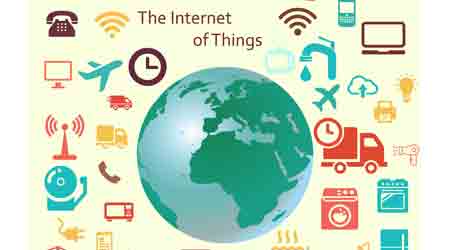How Building IoT Offers Accountability to Occupants
Part 3 of a 4-part article on Building Internet of Things (IoT) benefits for facility managers, occupants, tenants
Accountability to facility occupants continues to grow in importance for facility managers, and here the Building IoT can be useful as well. First among the several significant benefits to a facility’s occupants is a potential for improved life safety. In a security or life safety emergency, a whole host of things need to happen quickly in a moment of crisis, and Building IoT technology can facilitate that speed of response.
In a more day-to-day fashion, Building IoT can also deliver a more comfortable work environment to facility occupants. The predictive and continuous maintenance aspects of a Building IoT solution mean systems will be performing within established parameters, and any issues will be discovered and resolved much more quickly, perhaps before occupants can even sense them. “The immediate benefit for occupants is that they get a better environment,” says Els.
In addition, Building IoT supports another aspect of personal comfort: controllability. It has been proven time and again that having some degree of control over the immediate work environment is a highly desired attribute in the workplace. From the lighting set-up for individual spaces, to the amount of cooling that is done, to control of the blinds, the Building IoT supports a much more personalized feeling, Els says. “And occupant comfort, which is hard to quantify, does have a direct impact to productivity,” he says. “That direct control, which is personalized, makes a big difference.”
The personalization of the workplace experience can be carried throughout the facility with Building IoT. For example, when an occupant swipes in at the lobby with her access control card, the security system can send that information back to the BMS, which can relay the signal to turn the lights on and adjust the HVAC setpoint in the workspace. The same can be done in reverse sequence when the person is done working for the day. This is possible today with access cards, says Els.
The next step, he says, is to move to beacon technology, so the building recognizes a person and grants access by picking up a Bluetooth signal from a smartphone, no swipe required. These location-aware applications are currently being applied in facilities like sports stadiums and airports, facilitating food delivery or just-in-time promotional messaging. “You can sit in the stands in a stadium, and we can know exactly where you are so we can deliver (your food order) exactly where you are,” says Els.
Beacon technology can also be particularly helpful in a healthcare setting, where patient satisfaction scores are so crucial and the patient experience often begins at the parking lot. “One of the biggest stresses is finding parking at a hospital and getting to the right place where you need to be,” says Els. “With beacon technology, you can get to the parking garage and have parking systems that lead you to the open parking spot.” Then using the Bluetooth in a smartphone and a wayfinding application, patients can navigate exactly to where they need to be for their appointment, he says.
Related Topics:















